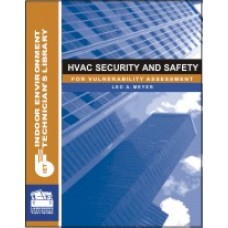All signs point to sustainability, safety and BIM technology when it comes to future success in the HVAC industry. But where do you begin? And most importantly, how do you keep building on what you’re already doing? Steve Jones — director of industry insights and research for Dodge Data & Analytics and keynote speaker at this year’s AEC BuildTech (April 30-May 2) — shows you the way forward to the future.
The only certainty in the construction industry is uncertainty, says Steve Jones, director of industry insights and research for Dodge Data & Analytics.
“This is a hideously uncertain business” Jones says. The problem, he explains, lies in what he calls “silos of excellence.”
“Your more advanced HVAC guys are already using a lot of technology to create ductwork and automatically fabricate ductwork. But now it’s about how can you integrate that along with other mechanicals, with electrical,” Jones says. “Look at it more like somebody who makes componentry for airplanes or ships. They’re delivering an entire component that can get assembled. They aren’t just delivering their one little system, and then everybody else has to work around it. We don’t need silos of excellence. We need a rethought integrated workflow system.”
Integration will be a major point of discussion when Jones delivers the keynote address at the upcoming, three-day AEC BuildTech Conference & Expo (April 30-May 2) in Rosemont, Illinois. The expo’s HVACR/mechanical systems segment, sponsored by Mestek Machinery, is one of five education tracks, including plumbing, roofing, building envelope and flooring. Jones’ address will cover how all of these areas can work together in the modeling environment.
“One is connecting upstream into the engineering process. Another is connecting downstream into fabrication,” he says. “You get the trade contractor working with the engineer. The engineer says what they are trying to achieve and asks how to best do it. Let them work that out together. You have a much higher chance designing it the way it’s going to get built.” Which leads to greater certainty, he says. “So the more certainty you can bring at any of these juncture points the better it is for everybody.”
Some of the fastest growing industries in HVACR/mechanical systems are sustainability, safety and BIM technology. As a primer before the expo, Jones shares insights into how these trends will translate to building business.
Sustainability
This trend is extending beyond its original focus on energy-conscious buildings to a deeper understanding of how the construction process itself can be made “greener.” As such, it is increasingly important for general contractors to be capable of sustainable construction as both a requirement from environmentally-aware owners and a competitive capability to successfully differentiate themselves to win more work. In addition, it’s “the right thing to do.”
- Before you break into sustainability, it is important to understand the basics of the sustainable construction trend. McCarthy , a major general contractor, defines itself as a “green builder” and defines sustainability as “creating innovative structures that blend form with function, in harmony with the environment.” Start engaging the owner on sustainability goes and identify what you as the contractor can do to help accomplish those goals. To bone up on the basics of sustainability in building, visit new.usgbc.org.
- To advance in implementing sustainable construction, it becomes important to know in detail exactly what it means for your trade and to put the practices in place to “walk the talk.” For HVAC contractors for instance, what can you do to reduce the amount of metal waste you generate on a site? How can you impact the number of times that powered equipment has to move your materials on a site? How much can you prefabricate, especially in multi-trade assemblies to reduce waste and optimize sire space and resources?
- If you are already an experienced green building practitioner, make sure you are measuring the benefits and improvements. Not only will that encourage more internal innovation, but it becomes the key to increasing the competitive value of your accomplishments.
Safety
As we all know, safe construction is a challenging goal, but there isn’t a more important initiative in the entire industry.
Low Engagement
- If your company’s safety performance isn’t what you want it to be, there are excellent resources available from organizations like the CPWR Center for Construction Research and Training that can quickly educate you on what steps you can begin to take on your way to a more meaningful commitment to improving job site safety. For more information, visit cpwr.com.
Data-Driven Decisions

With its insights on opportunities for growth in the construction industry, New Yorkbased Dodge Data & Analytics employs a team of research analysts and oers software-based workflow integration solutions construction firms can utilize to make data-driven business decisions.
“As North America’s leading provider of analytics and software-based workflow integration solutions for the construction industry, Dodge Data & Analytics is at the forefront of the trends that continue to shape and transform commercial construction,” says Mike Petrullo, CEO at Dodge. “Our proprietary research provides current, relevant insights and intelligence that oer significant opportunities for firms to expand their knowledge base, better understand their markets, identify unseen opportunities, make informed decisions— and thereby improve their competitive position and grow their business. In short, Dodge provides the industry with the ability to see ahead, think ahead, and stay ahead.”
For more information about construction data reports and integrated solutions from Dodge Data & Analytics, visit construction.com.
Medium Engagement
- If you think your company “does safety well enough,” think again, because there is always room for improvement. Dodge has reports which address best practices and provide specific guidance on what is working for other companies.
High Engagement
- If you are at the top of the industry in terms of safety performance, congratulations. But don’t rest on your laurels. Become an evangelist for what is achievable and never rest.
BIM
Model-based processes are rapidly becoming standard practice, especially on complex projects. An increasing number of general contractors expect and demand BIM capability from trade contractors. Ignoring this trend is risking irrelevance in the market place.
- Every trade organization has resources to help its members become knowledgeable about and capable with BIM. Take advantage of those. Specifically, read ASHRAE’s “An introduction to BIM” guide at ashrae.org.
- BIM standards for multi-party integrated digital workflows and collaborative processes with other BIM team members are the most critical aspects for companies at this stage of their BIM journey. Talk with other firms involved in BIM projects and leverage their experience. Be prepared to share yours also. BIM is a team sport.
- Measuring the positive impact of BIM to continually improve your program and sharing best practices with your team member companies will pay great dividends in accelerating your transformation, as well as conveying your successes for marketing purposes. (Learn how to build a seamless workflow from a constructitable model to CAM.)











